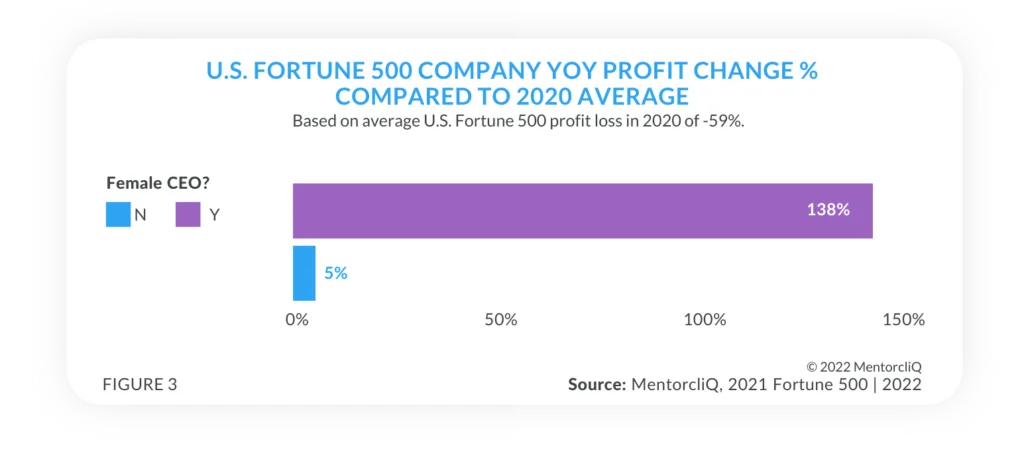As of 2022, the Fortune 500 mentoring programs are the standard instead of the exception. Organizations utilize numerous strategies to attract, engage, and retain talent. Among the many methods that talent development leaders turn to, mentoring has become a staple, with 84% of top U.S. companies now providing structured mentoring programs to some or all of their employees.
Mentoring programs are designed to connect employees into 1-to-1 or 1-to-many mentor/mentee engagements. These relationships streamline the sharing of knowledge by breaking down internal knowledge silos while doing the double-duty of supporting collaboration, interpersonal relationships, cross-functional learning, upskilling and reskilling, and positive company cultures.
Objectives of This Report
In 2004, a research article published in Human Resource Development Quarterly reported that 70% of Fortune 500 companies had mentoring programs. That stat has remained a benchmark and foundation for the conversation around mentoring for nearly 20 years. However, data based on a snapshot in time ultimately loses its efficacy within a few years.
Just as you don’t build new houses on old foundations, you certainly don’t build employee development strategies around old data. Nevertheless, talent development professionals and industry observers alike continue to turn their eyes to the Fortune 500 list to gain insights in two key ways:
- Are Fortune 500 companies using mentoring programs?
- In what ways are they using mentoring programs?
The latter question — “In what ways are Fortune 500 companies using mentoring?” — has proven difficult to answer in the past due to a lack of visibility into the inner workings of these companies’ employee engagement strategies.
Unraveling the Often-Cited “70%” Stat
Consequently, that lack of visibility means that businesses researching the benefits of mentoring have been forced to rely on what little data was available, including the oft-repeated stat that “70% of Fortune 500 companies use mentoring programs.” Despite its age, this two-decades-old data is still one of the most frequently-cited stats regarding Fortune 500 mentoring.
It’s used nearly everywhere that the topic of Fortune 500 mentoring programs arises: Forbes, The Atlantic, and multiple journals and news websites that cover human resource-related topics, such as Harvard Business Review and ATD. As useful as this data has been to reference, it’s also largely problematic.

The stat is originally sourced from a 2004 research article titled, “The development and maintenance of exemplary formal mentoring programs in fortune 500 companies” by Christine D. Hegstad and Rose Mary Wentling.
Aside from having been in circulation for nearly 20 years, making it a largely outdated data point to continue referencing in 2022, its original source was difficult to track down. In most places where the “70%” stat is referenced, the original research and source are rarely, if ever, cited. Instead, most publications that use the data cite other reputable sources that have used the stat, who referenced others, ad nauseam.
To its credit, The Wall Street Journal was one of the earliest publications to make use of this stat in 2009, although it, too, failed to identify the original work.
Fortune 500 Mentoring Data for 2022
The publication of current and reliable data on the mentoring landscape and its impacts on Fortune 500 companies has been inconsistent. To help close some of these knowledge gaps, officially expire the use of significantly outdated data, and empower learning and development professionals with deeper insights, MentorcliQ combined its unique visibility into U.S. Fortune 500 mentoring programs, as well as thorough research, to help provide several new and actionable data insights.
84% of U.S. Fortune 500 Companies Use Mentoring Programs

Because of the prominence of the companies listed there, organizations and industry observers alike often turn to the U.S. Fortune 500 list for strategic insights. This includes examining how these successful companies engage and retain their talent. We found that the commonly-cited “70%” is no longer accurate and we strongly advocate for the expiry of usage of this 20-year-old datapoint where it is referenced.
Importantly, not all mentoring programs are visible. Many companies run internal mentoring programs that are not publicly referenced either by themselves or their mentoring program provider. Those that do reference or allow public mentions of their mentoring programs often do so as a method to attract and retain talent, given mentoring and its benefits have quickly become a sought-after perquisite of employment.
Notably, a 2020 ManpowerGroup study reported that 93% of Millennials believe “ongoing skills development” is essential for their future career growth. And in its 2016 Millennials Survey, Deloitte found that 81% of Millennials stay 5 years or more at a company when they have a mentor.

Overall, companies with mentoring programs already in place in 2020 did better than those without mentoring available to employees.
On average, U.S. Fortune 500 companies experienced a profit change of -59% in 2020
compared to 2019, a decrease distinctly associated with the global Covid-19 pandemic. The
global pandemic hit companies hard across the board. While some fared better than others,
it’s interesting to note the significant difference in profit change, on average, between those
companies with mentoring programs and those without, particularly considering the
pandemic quickly became an issue of labor availability.
Companies with Mentoring Programs Rank Higher on the U.S. Fortune 500 List
Given the Fortune 500 list is based on profitability and revenue, this ultimately means
that companies with mentoring programs also tend to generate more revenue and have
better profitability.

Companies with mentoring programs had an average 2021 U.S. Fortune 500 rank of 238, compared to an average rank of 315 for those without mentoring programs.
90% of U.S. Fortune 500 Companies with Female CEOs Have Mentoring Programs
90% of U.S. Fortune 500 companies with women CEOs have mentoring programs. What’s more, those companies with mentoring programs fared far better than the average for all U.S. Fortune 500 companies and those without female CEOs. In 2020, the average profit change percent for all companies was -59%, a steep decline. Notably, female-led U.S. Fortune 500 companies enjoyed a positive 13% YoY profit change. Consequently, companies that had mentoring but did not have female CEOs were much closer to the average YoY change in profits with an average 56% decline

The data above also reveals that the YoY profit changes for companies with female CEOs
were:
- 138% better than average for all U.S. Fortune 500 companies in 2020
- 132% better than average for U.S. Fortune 500 Companies with mentoring programs
- 161% better than average for U.S. Fortune 500 Companies without mentoring programs
Despite the small percentage of companies with female CEOs, this data helps to confirm the findings from other studies that show companies with a higher percentage of female executives tend to be more profitable. That includes a 2019 S&P Global study which reports that “firms with female CFOs are more profitable and generated excess profits of $1.8T,” and a 2019 McKinsey study that discovered companies with higher levels of both ethnic and gender diversity among leadership teams were more likely to display financial outperformance.
Conclusions
There is now strong evidence that talent development programs, including mentoring, are strongly correlated with positive revenue and profit outcomes for Fortune 500 businesses. What’s more, data from the 2021 U.S. Fortune 500 list indicates that companies that prioritize mentoring and other engagement strategies fared better during one of the most financially chaotic periods in history.
That the vast majority of U.S. Fortune 500 companies now offer mentoring programs is a testament to their leadership and experiential insights. Companies don’t make it to the Fortune 500 list by accident. More commonly, they utilize best practices across all of their channels, including their talent development, retention, and engagement strategies. As our current research and data insights indicate, structured mentoring programs are now a go-to people strategy among most companies on the Fortune 500 list.
Methodology
MentorcliQ provides mentoring services to enterprises globally. This visibility allowed us to gain a wide initial view into the number and type of mentoring programs currently running at U.S. Fortune 500 companies. We also combined this with a deep-level investigation into visible mentoring programs at all 2021 U.S. Fortune 500 companies by examining current public statements and documentation, including, but not limited to, company website pages, social media posts, corporate responsibility documents, and other areas where viable evidence of active mentoring programs may exist. All other data insights were also obtained and combined from publicly available sources, including the 2021 Fortune 500 list and LinkedIn industry categorization.




